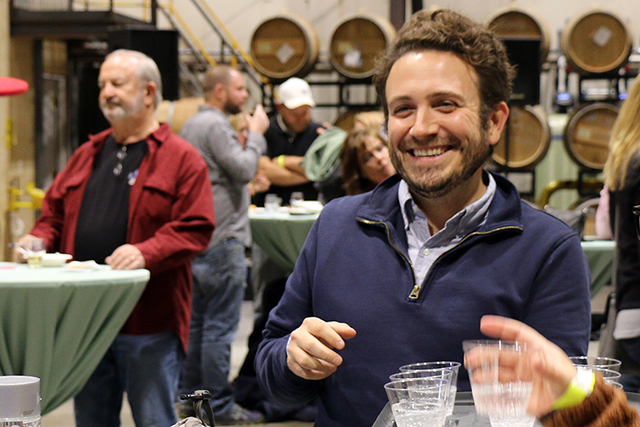
For orchard-based cideries and perry producers, biodiversity is a strategic choice that affects tree health and fruit quality, and can also enhance customer perception. While the payoff isn’t always quick or easily measurable, orchard-based companies say the long-term resilience and unique identity are worth the effort.
For Seminary Hill in New York’s Catskills, co-owner Doug Doetsch has worked biodiversity into the orchard layout from Day 1. Steep slopes remain covered in wildflowers, and mint and yarrow surround the trees.
“We’ve seen benefits in the resilience of the trees… and high levels of sugar, which will result in more flavorful and higher-alcohol ciders,” Doetsch told Brewer Mag/Cider Business.
Companion planting also supports pollinators, and organic sprays are used sparingly. His takeaway: plant strategically, use the land’s natural contours, and look for multi-purpose plants that can improve soil health, attract pollinators, and protect against pests.
Instead of removing all ground growth, 7bev Corp — which runs Queen Orchard in Oregon — mows and leaves clippings to decompose into mulch and biomass instead of spraying and to encourage regenerative growth.
“You can’t force an apple tree to make apples — you support the ecosystem and let the tree do what it’s meant to do over time,” said general manager Toney Chay.
His tip for new orchardists: focus first on building soil health, even if it means slower tree growth in the short term. Over time, nutrient-dense soil supports better fruit quality and reduces problems like root suckering.
Nate Watters of Keepsake Cidery runs what some might call a “wild” orchard — tall grasses, wildflowers, no herbicides, and selective mowing. But there’s structure in the timing. The early and late months get more mowing and airflow management; the middle months are allowed to bloom and buzz with life.
“Any quality statements or any claims of benefits would be purely empirical,” Watters said. But he emphasizes the customer experience: people sipping cider among flowers and butterflies form a deeper connection to the brand. His advice was to not overlook the value of biodiversity as part of your cidery’s identity and tasting room experience.
For Perry-focused producers like Blossom Barn Cidery, biodiversity starts with variety selection. Jeremy Hall said that 11 pear cultivars bloom at different times, protecting against frost losses and ensuring pollination.
“Planting a diversity of pears is critical for pollination success,” Hall said. Sheep grazing, mulching with wool, composting pomace, and avoiding nitrogen spikes all contribute to better disease control and slow, balanced fermentations. He added that producers should match their biodiversity strategy to their crop’s specific vulnerabilities, such as fireblight in pears, and integrate livestock or waste recycling to close nutrient loops.
READ MORE: Why Orchard Preservation Is Becoming a Strategic Imperative for Cidery Owners
The benefits of biodiversity, which can lead to stronger trees, healthier soils, and reduced chemical inputs, can also carry trade-offs. Slower growth, variable yields, and the lack of hard data connecting biodiversity to cider flavor make it a leap of faith for some.
But those who commit say it’s a hedge against climate variability, a boost to flavor potential, and a marketing story that resonates with customers.
The shift can start small: introduce companion plants, reduce mowing in non-critical months, plant multiple varieties with staggered bloom times, and invest in your soil first. The economics may not look like conventional orchard management, some said, but the long-term gains in resilience, customer loyalty, and orchard vitality can make biodiversity a powerful tool for both the land and the brand.






Be the first to comment